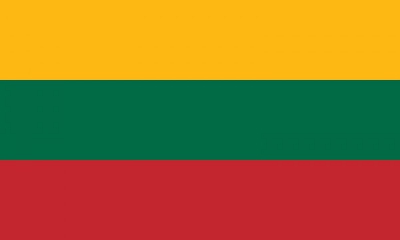The Klaipda Revolt took place in January 1923 in the Klaipda Region (also known as the Memel Territory or Memelland). The region, located north of the Neman River, was detached from East Prussia, German Empire by the Treaty of Versailles and became a mandate of the League of Nations. It was placed under provisional French administration until a more permanent solution could be worked out. Lithuania wanted to unite with the region (part of Lithuania Minor) due to its large Lithuanian-speaking minority of Prussian Lithuanians and major port of Klaipda (Memel) the only viable access to the Baltic Sea for Lithuania. As the Conference of Ambassadors favored leaving the region as a free city, similar to the Free City of Danzig, the Lithuanians organized and staged a revolt.
Presented as an uprising of the local population, the revolt met little resistance from either the German police or the French troops. The rebels established a pro-Lithuanian administration, which petitioned to unite with Lithuania, citing the right of self-determination. The League of Nations accepted the fait accompli and the Klaipda Region was transferred as an autonomous territory to the Republic of Lithuania on February 17, 1923. After prolonged negotiations, a formal international agreement, the Klaipda Convention, was signed in May 1924. The convention formally acknowledged Lithuania's sovereignty in the region and outlined its extensive legislative, judicial, administrative, and financial autonomy. The region remained part of Lithuania until March 1939 when it was transferred to Nazi Germany after a German ultimatum.
Lithuanians (Lithuanian: lietuviai, singular male: lietuvis, singular female: lietuvė) are a Baltic ethnic group. They are native to Lithuania, where they number around 2,378,118 people. Another million or more make up the Lithuanian diaspora, largely found in countries such as the United States, United Kingdom, Brazil, Russia, and Canada. Their native language is Lithuanian, one of only two surviving members of the Baltic language family along with Latvian. According to the census conducted in 2021, 84.6% of the population of Lithuania identified themselves as Lithuanians, 6.5% as Poles, 5.0% as Russians, 1.0% as Belarusians, and 1.1% as members of other ethnic groups. Most Lithuanians belong to the Catholic Church, while the Lietuvininkai who lived in the northern part of East Prussia prior to World War II, were mostly Evangelical Lutherans.

1923Jan, 9
Lithuanian residents of the Memel Territory rebel against the League of Nations' decision to leave the area as a mandated region under French control.
Choose Another Date
Events on 1923
- 16Feb
Tutankhamun
Howard Carter unseals the burial chamber of Pharaoh Tutankhamun. - 25Jun
Aerial refueling
Capt. Lowell H. Smith and Lt. John P. Richter perform the first ever aerial refueling in a DH.4B biplane - 1Jul
History of Chinese immigration to Canada
The Canadian Parliament suspends all Chinese immigration. - 12Sep
Zimbabwe
Southern Rhodesia, today called Zimbabwe, is annexed by the United Kingdom. - 29Oct
Ottoman Empire
Turkey becomes a republic following the dissolution of the Ottoman Empire.

 English
English  español
español  français
français  português
português  русский
русский  العربية
العربية  简体中文
简体中文 